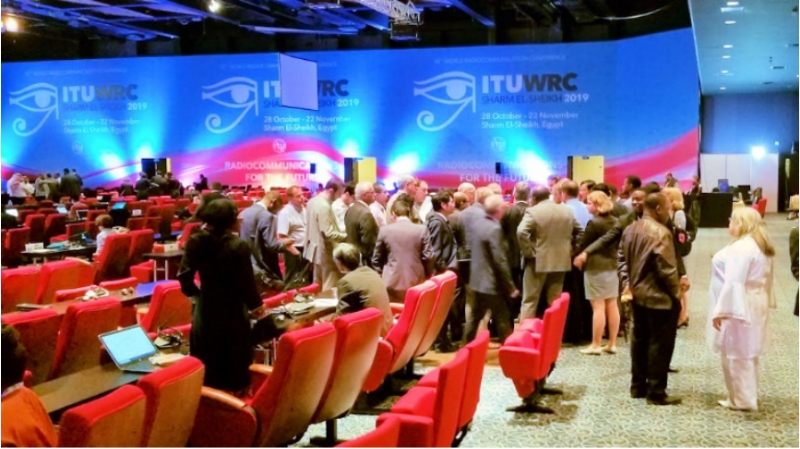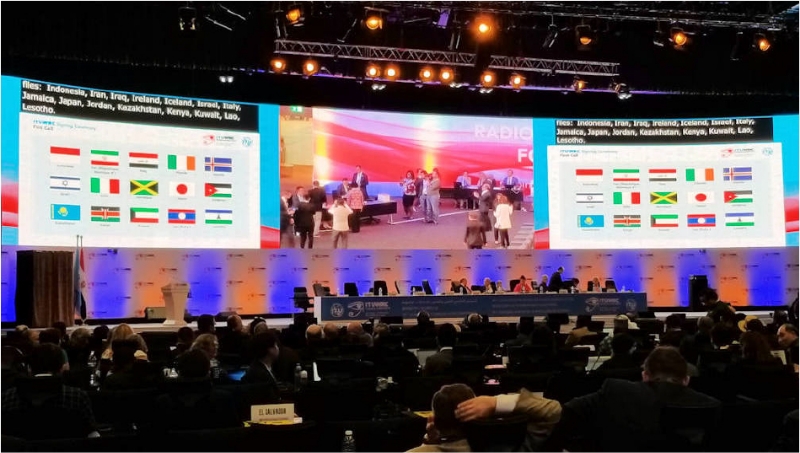Ocean Newsletter
No.557 October 20, 2023
-
A New Phase for the Intergovernmental Oceanographic Commission of UNESCO (IOC/UNESCO) and Japan’s Role
MAKINO Mitsutaku (Professor, Atmosphere and Ocean Research Institute, The University of Tokyo)
At the 32nd session of the UNESCO-IOC, reports were given on the various operations for which it is responsible and plans of action were discussed. A notable topic was the election of Professor Yutaka Michida as the new Chairperson, the first time a Japanese national has held this position in the 60 years since the IOC was founded. It is hoped that Japan, with its geographical characteristics and historical and cultural background as an Asia-Pacific nation, will increasingly lead discussions on marine science and sustainable use of the ocean.
-
Understanding Early Life Evolution from Microorganisms in Deep Earth Extreme Environments
Shino SUZUKI (Associate Professor, Department of Interdisciplinary Space Science, Japan Aerospace Exploration Agency / Chief Scientist, RIKEN Cluster for Pioneering Research Geobiology and Astrobiology Laboratory)
While there is great diversity among the ocean’s environments, in the deep earth microorganisms exist in extreme environments which are considered forbidding for life. As it is assumed that early earth ecosystems were isolated from metabolisms based on light energy, it is thought that there are similarities with the intralithic ecosystem of serpentinite water systems found on earth. The serpentinite biosphere deep under the ocean floor is important for understanding the evolution of life, and I am excited about new scientific findings as I take on the challenge of elucidating the origin of life.
-
Standardization in Maritime Radio Communications
MIYADERA Yoshio (Business Strategy Group, Business Planning Department, Marine Systems Division, Japan Radio Co., Ltd.)
This article focuses on international standardization in the field of maritime radio communications and introduces the history of the International Telecommunication Union (ITU), a pioneer in standardization, as well as the importance of standardization. It also reports on the VHF Data Exchange System (VDES) being introduced into marine radio, the promotion of marine DX, and the efforts to date on the introduction of autonomous ships and the challenges they will face in the future.
Standardization in Maritime Radio Communications
This article focuses on international standardization in the field of maritime radio communications and introduces the history of the International Telecommunication Union (ITU), a pioneer in standardization, as well as the importance of standardization. It also reports on the VHF Data Exchange System (VDES) being introduced into marine radio, the promotion of marine DX, and the efforts to date on the introduction of autonomous ships and the challenges they will face in the future.
The International Telecommunication Union (ITU)
Japan actively makes proposals regarding the standardization of maritime radio communication technologies that reflect Japan's latest technologies and frequency usage situations not only in the ITU Radiocommunication Sector (ITU-R) but also at international organizations such as the International Maritime Organization (IMO) and the Asia-Pacific Telecommunity (APT). For instance, Japan has been leading the discussion on the introduction of Satellite VDES (VHF Data Exchange System utilizing satellites)1 and has been promoting and leading the standardization of VDES by accurately reflecting Japan's views on frequencies and other matters in the ITU Radio Regulations and related Recommendations.
International Standardization of Maritime Radio Communications
An international standard is a shared global specification. It unifies the structure and performance of products, technologies and services across different countries into a single worldwide standard. International standardization is particularly crucial in the field of radio communications. Without it, communication would not be possible, and the various applications that use radio communications could not be deployed globally. In maritime radio communications, international standardization of various communication methods such as satellite communications, in addition to terrestrial communications, is essential for ship communications, including distress and safety communications. International standards also play a vital role in ensuring that radio waves, a precious natural resource, are used efficiently, fairly, and rationally.
Initially, the primary purpose of radio communications was for communicating with ships. However, in the early stages, there was no uniformity in the frequencies and the terminology used, making it difficult to communicate between the users of different radio manufacturers. The first International Radiotelegraph Conference, held in Berlin in 1906, established the International Radiotelegraph Convention and its associated service regulations. This event assigned unified frequencies and imposed watchkeeping duties, and it also established a unified distress signal for Morse communication, later widely known as SOS.
The Global Maritime Distress and Safety System (GMDSS) entered into force on February 1, 1992, and became fully operational on February 1, 1999. It replaced former Morse communications with the ones using satellite communication and digital communication technologies. The author initially worked in the design of ship radio equipment but shifted focus to the international standardization of maritime radio communications from around 2009. In addition to standardization related to GMDSS, one of the main standardizations the author is working on is that of the VHF Data Exchange System (VDES).
VDES is a data communication system using the maritime VHF band frequencies. In addition to the Automatic Identification System (AIS) widely used for exchanging ship position information, VDES facilitates the exchange of simple messages, navigational information, port information, and information related to safe navigation of ships, etc., between ships, ships and shore stations, and ships and satellites. Since VDES is a data communication system that extends the technology of AIS, it is sometimes referred to as next-generation AIS (AIS 2.0). While there are numerous types of communication methods at sea, including satellite communication, it is hoped that VDES will become a universal digital platform for all ships. Additionally, combining satellite VDES with terrestrial communications will provide global coverage.
Europe has been launching VDES satellites since 2017. China has also been actively deploying VDES satellites in recent years. However, Japan has not yet launched its own VDES satellite. From the perspectives of Maritime Domain Awareness (MDA) and economic security, there is a strong desire for Japan to launch its own VDES satellite.
The international standardization of information and communication fields, such as maritime radio communications, is crucial for the creation of a global market through the harmonization of standards. Strategically securing the initiative in developing international standards is vital from the perspective of enhancing Japan's international competitiveness.


The top photo is during a coffee break, where some issues were still being debated until the end. The bottom photo is from the signing ceremony conducted by participating countries on the final day.
Autonomous Ships and Ocean Digital Transformation
The development of Maritime Autonomous Surface Ships is being advanced globally, centered around the International Maritime Organization (IMO), aiming to reduce maritime accidents caused by human error and improve the working environment for seafarers. Currently, detailed deliberations are being conducted on basic principles, including the definitions of terms specific to autonomous ships and functions that should be automated. In Japan, the Nippon Foundation is taking the leading role in promoting the MEGURI2040 Fully Autonomous Ship Program,2 which aims to have 50% of domestic ships operating unmanned by the year 2040. Standardization will be required across various fields for the widespread adoption of autonomous ships, starting with operational rules. Furthermore, the collection and utilization of information related to ship operations (such as the status of the vessel and surrounding environment) are essential. These aspects are also components of Ocean DX (DX: Digital Transformation; transformation through the utilization of digital technologies).
On April 28, 2023, the Fourth Basic Plan on Ocean Policy was approved by the Cabinet. It included the promotion of Digital Transformation (DX) of the ocean as a "major policy to be steadily advanced." The collection, transmission, analysis, and utilization of data are important components in the promotion of Ocean DX, and efforts will be made to address these aspects using the most advanced marine science and technology whilst considering the reduction of environmental impacts. Additionally, the development of information infrastructure in the marine environment, including communication and transmission, is being promoted. Ocean DX is expected to generate innovation in the marine sector. Not only will it ensure the safe operation of autonomous ships, but it is also anticipated to open new avenues for environmental protection, such as addressing microplastic pollution in the future.
It is often said that maritime communication environments are about ten years behind those on land, but this gap is narrowing with the proliferation of satellite communications. Furthermore, the emergence of common platforms such as VDES has increased the means for collecting and utilizing big data, which is essential for DX. I also believe that in order to promote and take the lead in the introduction of autonomous ships, it will become increasingly important to support the advancement of communication and information sharing systems from a technological standpoint, an area in which Japan excels, drive international standardization efforts, and develop human resources involved in these areas. (End)
1. See "Policy Recommendations for Satellite VDES in a Digital Maritime Era" by TANAKA Kotaro, No. 534 of this magazine (November 5, 2022)
https://www.spf.org/opri/newsletter/534_1.html
2. See MEGURI2040 Fully Autonomous Ship Program
https://www.nippon-foundation.or.jp/en/what/projects/meguri2040
